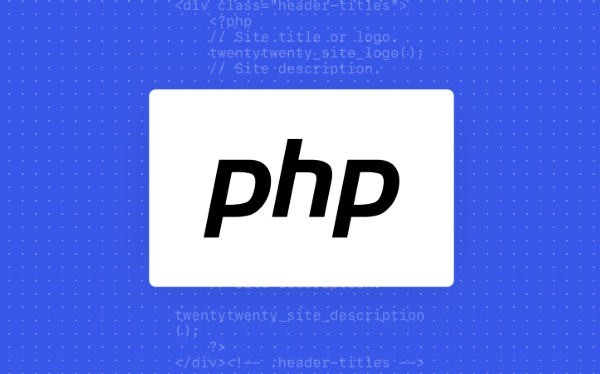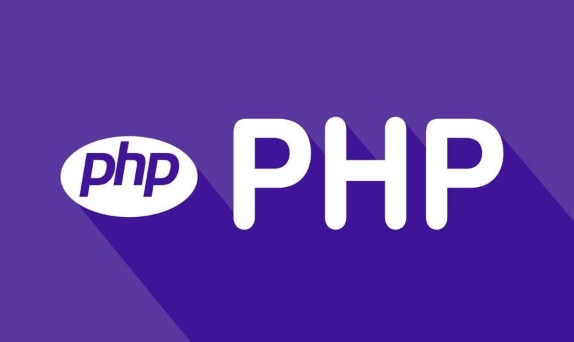 Backend Development
Backend Development
 PHP Tutorial
PHP Tutorial
 Crafting Interactive Web Experiences: An Introduction to PHP's Power
Crafting Interactive Web Experiences: An Introduction to PHP's Power
Crafting Interactive Web Experiences: An Introduction to PHP's Power
Jul 26, 2025 am 09:52 AMPHP remains a powerful and accessible server-side language for creating interactive web experiences because it enables dynamic content generation, user authentication, and real-time data handling; 1) it is easy to learn and widely supported, integrating directly with HTML and most hosting platforms; 2) it offers a robust ecosystem with modern frameworks like Laravel and Symfony for scalable, secure development; 3) it provides seamless database integration via PDO or MySQLi, allowing dynamic content retrieval from databases like MySQL; 4) it handles user input securely through $_POST and $_GET, enabling form processing with validation and personalized responses; 5) it supports sessions via session_start(), making user authentication, shopping carts, and personalized dashboards possible; 6) it works with AJAX to enable asynchronous interactions such as live search and real-time comments by returning JSON data to JavaScript without page reloads; and 7) it benefits from decades of community support, extensive documentation, and open-source projects, ensuring reliability and ease of troubleshooting—making PHP a proven choice for building dynamic, interactive websites that do more than just display static content.

Creating engaging, interactive web experiences isn’t just about flashy animations or responsive designs—behind the scenes, it’s the server-side logic that powers dynamic content, user authentication, and real-time data handling. One of the most accessible and long-standing tools for this is PHP.

While newer technologies often grab headlines, PHP remains a backbone of the web—powering over 75% of websites that use server-side programming, including giants like WordPress, Facebook (in its early days), and Wikipedia. So, what makes PHP so effective for building interactive web experiences?
Why PHP Still Matters for Dynamic Websites
PHP (Hypertext Preprocessor) is a server-side scripting language designed specifically for the web. Unlike static HTML, PHP allows developers to generate content on the fly based on user input, database queries, or other conditions.

Here’s why it’s still a solid choice:
- Easy to learn and deploy: PHP integrates seamlessly with HTML, and most web hosting providers support it out of the box.
- Strong ecosystem: With frameworks like Laravel, Symfony, and tools like Composer, modern PHP development is clean, secure, and scalable.
- Database integration: PHP works smoothly with MySQL, PostgreSQL, and other databases, making it ideal for data-driven sites.
- Community support: Decades of use mean countless tutorials, packages, and open-source projects are readily available.
Handling User Input and Forms
One of the simplest ways PHP adds interactivity is through form processing. When a user submits a login, comment, or contact form, PHP can:

- Capture input via
$_POSTor$_GET - Validate and sanitize data to prevent security issues
- Store information in a database or send it via email
- Return personalized feedback
For example:
if ($_POST['submit']) {
$name = htmlspecialchars($_POST['name']);
echo "Hello, " . $name . "! Thanks for submitting the form.";
}This ability to respond to user actions in real time is foundational to interactive experiences.
Working with Sessions and User Authentication
PHP supports sessions, allowing you to remember users as they navigate your site. This is essential for features like:
- Login systems
- Shopping carts
- User dashboards
Using session_start(), you can store user data across pages:
session_start(); $_SESSION['user_id'] = 123;
From there, you can personalize content, restrict access, or track preferences—all key to creating a tailored experience.
Connecting to Databases for Dynamic Content
Most interactive sites pull data from databases. PHP’s PDO or MySQLi extensions make it easy to query and display dynamic content like blog posts, product listings, or user profiles.
Example:
$pdo = new PDO("mysql:host=localhost;dbname=site", $username, $password);
$stmt = $pdo->query("SELECT title, content FROM posts");
while ($row = $stmt->fetch()) {
echo "<h2>{$row['title']}</h2><p>{$row['content']}</p>";
}This means your site isn’t just a static brochure—it can evolve with new content without changing a single line of HTML.
Enhancing Interactivity with AJAX and PHP
PHP doesn’t run in the browser, but it pairs perfectly with JavaScript to create seamless experiences. Using AJAX, you can send requests to PHP scripts without reloading the page—ideal for:
- Live search
- Infinite scroll
- Real-time comments
A frontend JavaScript event can trigger a fetch request to a PHP endpoint, which returns JSON data. The page updates instantly, making the experience feel fast and fluid.
Final Thoughts
PHP may not be the newest kid on the block, but its simplicity, flexibility, and deep integration with the web make it a powerful tool for crafting interactive experiences. Whether you're building a small contact form or a full-featured web app, PHP gives you the control and functionality to make your site truly dynamic.
Basically, if your website needs to do something—not just show something—PHP is a reliable way to make it happen.
The above is the detailed content of Crafting Interactive Web Experiences: An Introduction to PHP's Power. For more information, please follow other related articles on the PHP Chinese website!

Hot AI Tools

Undress AI Tool
Undress images for free

Undresser.AI Undress
AI-powered app for creating realistic nude photos

AI Clothes Remover
Online AI tool for removing clothes from photos.

Clothoff.io
AI clothes remover

Video Face Swap
Swap faces in any video effortlessly with our completely free AI face swap tool!

Hot Article

Hot Tools

Notepad++7.3.1
Easy-to-use and free code editor

SublimeText3 Chinese version
Chinese version, very easy to use

Zend Studio 13.0.1
Powerful PHP integrated development environment

Dreamweaver CS6
Visual web development tools

SublimeText3 Mac version
God-level code editing software (SublimeText3)
 Crafting Interactive Web Experiences: An Introduction to PHP's Power
Jul 26, 2025 am 09:52 AM
Crafting Interactive Web Experiences: An Introduction to PHP's Power
Jul 26, 2025 am 09:52 AM
PHPremainsapowerfulandaccessibleserver-sidelanguageforcreatinginteractivewebexperiencesbecauseitenablesdynamiccontentgeneration,userauthentication,andreal-timedatahandling;1)itiseasytolearnandwidelysupported,integratingdirectlywithHTMLandmosthostingp
 Building Your First Dynamic Web Page: A Practical PHP Primer
Jul 29, 2025 am 04:58 AM
Building Your First Dynamic Web Page: A Practical PHP Primer
Jul 29, 2025 am 04:58 AM
Install XAMPP/MAMP or use PHP built-in server and make sure the file is saved as a .php extension; 2. Use display the current time in hello.php; 3. Get user input through $_GET in greet.php and use htmlspecialchars() to prevent XSS; 4. Use include'header.php'; multiplex the page header; 5. Enable error reports during development, variables start with $, use arrays to store data, and always filter user input. You have created a dynamic web page that can respond to user input, display dynamic content and reuse code. This is a key step towards a complete web application. You can connect to the database or build a login system in the future, but you should be sure of yourself at this time.
 Beyond the Basics: Unlocking Web Dynamics with PHP
Jul 25, 2025 pm 03:01 PM
Beyond the Basics: Unlocking Web Dynamics with PHP
Jul 25, 2025 pm 03:01 PM
PHPenablesdynamiccontentgenerationbasedonusercontextbyleveragingsessions,geolocation,andtime-basedlogictodeliverpersonalizedexperiencessecurely.2.ItmanagesstateinHTTP’sstatelessenvironmentusing$_SESSIONandcookies,withenhancedsecuritythroughsessionreg
 Server-Side Scripting Demystified: A Hands-On Introduction to PHP
Jul 27, 2025 am 03:46 AM
Server-Side Scripting Demystified: A Hands-On Introduction to PHP
Jul 27, 2025 am 03:46 AM
PHPisaserver-sidescriptinglanguageusedtocreatedynamicwebcontent.1.Itrunsontheserver,generatingHTMLbeforesendingittothebrowser,asshownwiththedate()functionoutputtingthecurrentday.2.YoucansetupalocalenvironmentusingXAMPPbyinstallingit,startingApache,pl
 Decoding the Server-Side: Your First Steps into PHP's Architecture
Jul 27, 2025 am 04:28 AM
Decoding the Server-Side: Your First Steps into PHP's Architecture
Jul 27, 2025 am 04:28 AM
PHP runs on the server side. When the user requests the page, the server executes the code through the PHP engine and returns HTML to ensure that the PHP code is not seen by the front end. 1. Request processing: Use $_GET, $_POST, $_SESSION, $_SERVER to obtain data, and always verify and filter inputs to ensure security. 2. Separation of logic and display: Separate data processing from HTML output, use PHP files to process logic, and template files are responsible for displaying, improving maintainability. 3. Automatic loading and file structure: Configure PSR-4 automatic loading through Composer, such as "App\":"src/", to automatically introduce class files. Suggested projects
 The Cornerstone of the Web: A Foundational Guide to PHP Scripting
Jul 25, 2025 pm 05:09 PM
The Cornerstone of the Web: A Foundational Guide to PHP Scripting
Jul 25, 2025 pm 05:09 PM
PHPstillmattersinmodernwebdevelopmentbecauseitpowersover75%ofwebsitesusingserver-sidelanguages,includingWordPress(43%ofallwebsites),andremainsessentialforbuildingdynamic,database-drivensites.1)PHPisaserver-sidescriptinglanguagecreatedin1995tomakestat
 Embarking on Modern PHP: Syntax, Servers, and Composer
Jul 27, 2025 am 03:43 AM
Embarking on Modern PHP: Syntax, Servers, and Composer
Jul 27, 2025 am 03:43 AM
The core of modern PHP development is the three pillars of syntax, server and Composer. 1. Use modern PHP syntax: including PHP7.4 type attributes (such as publicstring$name), PHP8.0 union type (int|float), nullsafe operator (?->), match expressions and attributes metadata to improve code safety and readability, and declare declare(strict_types=1) at the top of the file to enable strict types. 2. Choose a suitable local development server: Abandon simple php-S and use LaravelSail, SymfonyCLI or Dock instead
 The Genesis of a Web Application: A Primer on PHP and MySQL
Jul 28, 2025 am 04:38 AM
The Genesis of a Web Application: A Primer on PHP and MySQL
Jul 28, 2025 am 04:38 AM
To start building a web application, first use PHP and MySQL to build a local environment and create a user registration system. 1. Install XAMPP and other integrated environments, start Apache and MySQL services; 2. Create database and users table in phpMyAdmin, including fields such as id, username, password, etc.; 3. Write an HTML registration form and submit data to register.php; 4. Use PDO to connect to MySQL in register.php, insert data through prepared statement, and encrypt password with password_hash; 5. Handle errors such as duplicate username. This way you can master the server





